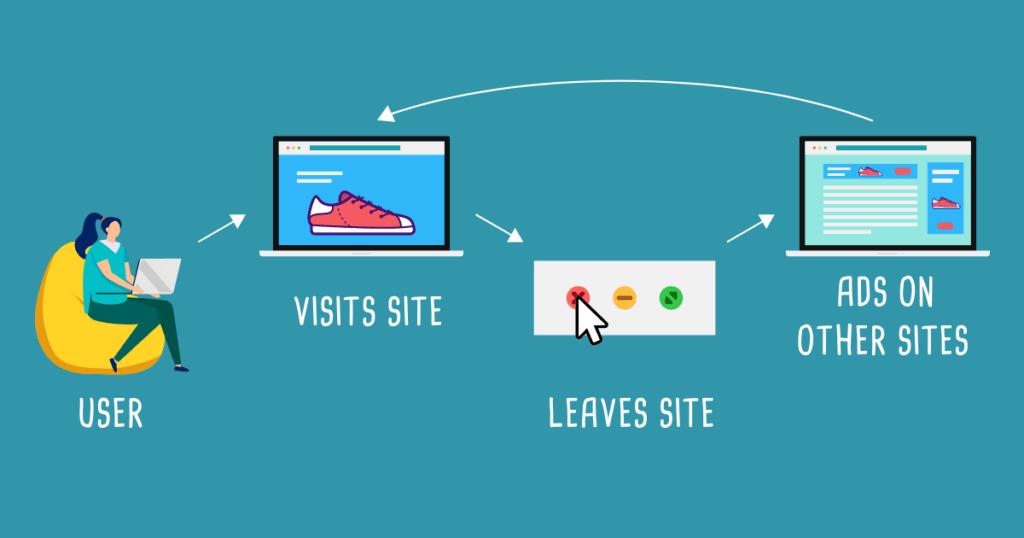Coffee maker. You take one look at a coffee maker online, and suddenly, every time you log in to your social media or hop on your favorite search engine, there it is in all its caffeinated glory. Some people might think that Facebook is getting a little too invasive; others may even believe their own personal CIA agent is spying on them. But, at Workhorse, we know exactly who the culprit is: ad retargeting. And we’re here to help you use it to your advantage.
What is Ad Retargeting?
In short, ad retargeting is exactly what it sounds like it is: showcasing your brand to an audience who has already shown interest in your product or service. Think of it like hitting a spare at the bowling alley. You knock down nine pins, then reposition yourself to get the last one. It is a cost-effective marketing strategy that keeps your business top of mind for customers who have already made it into the funnel. These ads also help businesses to control costs, produce ads easily, and create customized and tailored lists. You can retarget ads based on different actions taken by your audience, including site visits, actions taken while on your website, and a visit to your company’s social media page. Retargeted ads can also be used across platforms and take many forms, including standard square ads or banner ads. Images can be static or animated; however, gifs don’t work well in typical ad retargeting spaces because they can appear too pixelated.
How Does it Work?
Retargeted ads work by using tools to bid for placement across display networks and social media sites. Ever wonder why the ads on a website take a little longer to load than the site itself? In less than a second, your browser uses information gathered by cookies to start an auction process for ads relevant to your engagement history. The winning ad is displayed on the site…and you are – once again – reminded that you’re exhausted and could really use that cup of coffee.
There are parameters for using retargeted ads based on your website. You will need to install a retargeting pixel weeks before you can run retargeting ads, and, for the best campaign results, your site should have at least 100 hits per day. Your audience is also not dependent on what they’ve searched; instead, they have to click on your website to be counted within your retargeting audience. As we scan the internet, most websites drop cookies onto our browsers. Over time, tons of information is cached, including retargeting. These cookies typically tag along for around 30 days – which is about how long a potential consumer will be the target of these ad campaigns.
What are the Benefits?
From a business standpoint, retargeting is for potential customers who have made it into the funnel without completing a transaction. Perhaps they browsed your site for a few minutes and left without taking further action, or maybe they put items into their carts for later purchase and have forgotten about them. For the latter, running dynamic ads is an excellent strategy for getting them back to your site. Dynamic ads used for retargeting can feature the exact item a customer searched for during their visit. Let’s say a potential customer came to your site to look at your inventory of silver sequin pants but left before completing a transaction. Well, during your retargeting campaign, not only would they see ads for your business, but they would also see ads for the specific item they were looking at on your site.
Is Running a Retargeting Campaign the Right Choice for You?
Retargeting ads are an incredibly effective way to market to an audience that is already likely to make a transaction. Because your audience is meeting you more than halfway, these campaigns have a high ROI. When starting a retargeting campaign, determining the correct format is essential. Start by trying out the most commonly used ad sizes, A/B test your messages, and be sure to track your performance. Remember, this is an audience that’s already aware of and interested in your brand. Next, determine your sale cycle, plan to run your retargeting campaign for at least three months, then check for an uptick in your key performance indicators. If there is no upward movement, it’s time to change directions.
Even though retargeting ads are very effective, you must remember that results are not instant; no good marketing campaign is. You should, however, see your standard conversion rate rise. The campaign itself will perform well, and while you will see lower click rates from these ads, there will still be a lift in direct and organic traffic that can be tied to retargeting. Think of the ads as digital billboards. People might not like to click on them, but the ads will bring your audience back to your site.
Any marketing campaign is only as good as the strategy behind it. When it comes to yours, the experts are here to help. Go ahead and get that coffee pot that’s been staring at you for weeks, and, after you check out, call Workhorse to help you check into the ad retargeting strategy that’s right for you!

